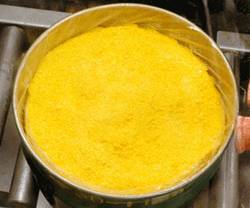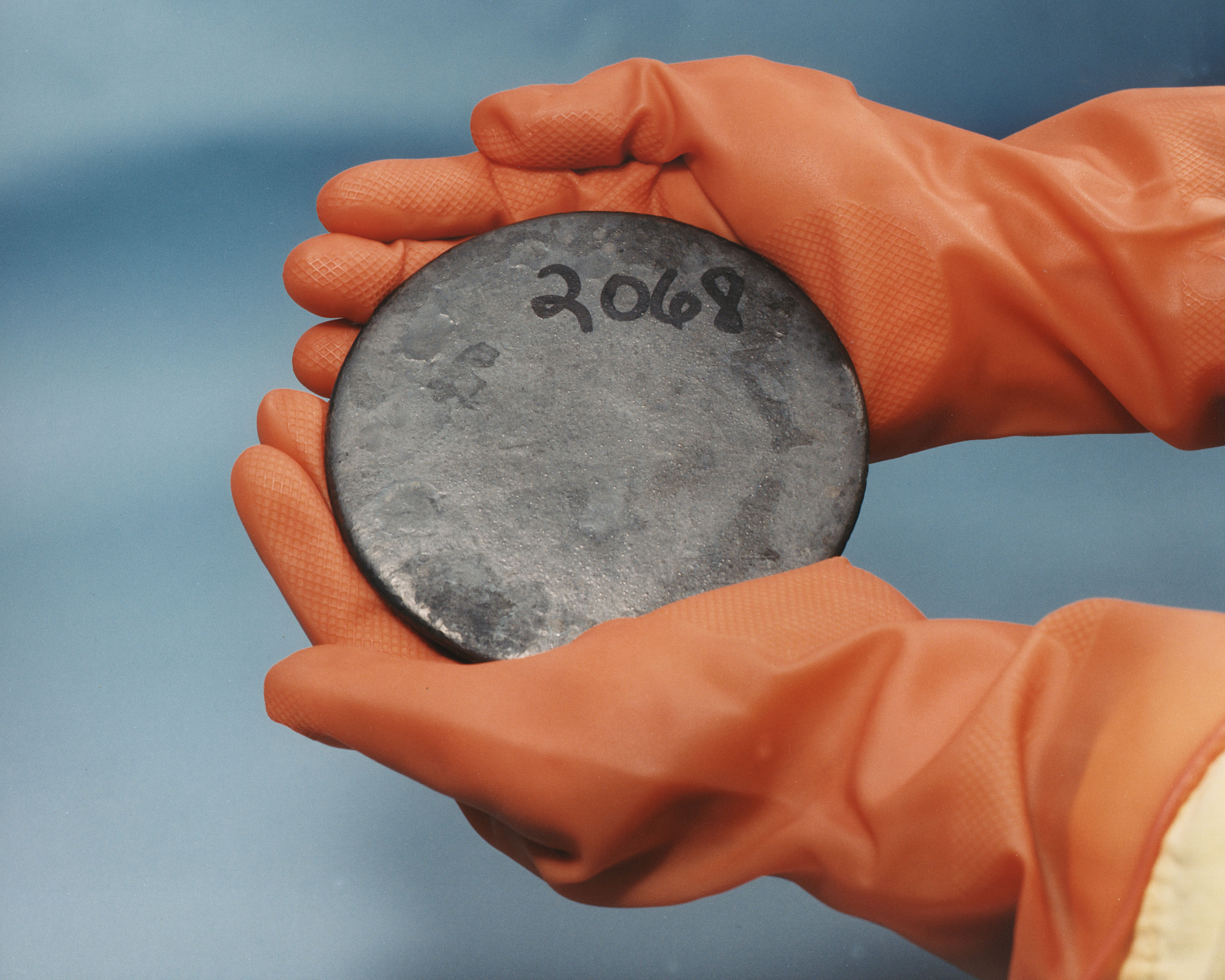|
NECSA
The South African Nuclear Energy Corporation (Necsa) was established as a public company by the Republic of South Africa Nuclear Energy Act in 1999 and is wholly owned by the State. The name is correctly indicated above, although the sequence of letters in the acronym may be taken as suggesting that the name should be the "Nuclear Energy Corporation of South Africa". Operations Necsa replaced the country's Atomic Energy Corporation. Apart from several ancillary functions, the main functions of Necsa are to undertake and promote research and development in the field of nuclear energy and related technologies; to process and store nuclear material and other restricted material; and to co-ordinate with other organisations in matters falling within these spheres. Apart from its main operations at Pelindaba, Necsa also operates the Vaalputs radioactive waste disposal facility. The corporation also serves the State's other nuclear institutional obligations. The chief executive officer ... [...More Info...] [...Related Items...] OR: [Wikipedia] [Google] [Baidu] |
Vaalputs
Vaalputs is the only South African radioactive waste-disposal facility, called the ''Vaalputs Radioactive Waste Disposal Facility'', operated by NECSA. The facility is located about 100 km south-east of Springbok, in the Northern Cape. It covers an area of approximately 10,000 hectare, measuring 16,5 km from east to west and 6,5 km from north to south at its narrowest point. Approximately 1,000 hectare is occupied by sites developed for low- and intermediate-level waste, an interim spent nuclear fuel storage facility, housing, roads, power lines and an airstrip. Vaalputs lies between the Namaqualand in the west and the Bushmanland in the east. During 1978 a programme to select a suitable site for the disposal of nuclear waste was commenced over large parts of South Africa. The programme leader had to keep a variety of socio-economic and geology related parameters in mind. Pioneer investigations indicated that the Northern Cape was the most feasible area. Supple ... [...More Info...] [...Related Items...] OR: [Wikipedia] [Google] [Baidu] |
SAFARI-1
SAFARI-1 is a 20 MW light water-cooled, beryllium reflected, pool-type research reactor, initially used for high level nuclear physics research programmes and was commissioned in 1965. The reactor is owned and operated by South African Nuclear Energy Corporation (NECSA) at their facility in Pelindaba, South Africa. The reactor is a tank in pool type reactor and is designed to run on enriched uranium. Currently the fuel in use is the remains of the decommissioned South African nuclear weapons. History The reactor was built in cooperation with the Atoms for Peace program run by the US DOE in the 1950s and '60s. Planning started in 1960 and construction occurred between 1961 and 1965. In March 1965 the reactor was commissioned and initially operated at 6.75 MW, a limitation imposed by the capacity of the secondary cooling circuit. Output was increased to 20 MW in 1968 after the secondary cooling circuit was upgraded. Initially the reactor was fueled with HEU supplied by th ... [...More Info...] [...Related Items...] OR: [Wikipedia] [Google] [Baidu] |
Pelindaba Nuclear Research Centre, Gate 3
Pelindaba ("Pelile Ndaba", Zulu for "end of story" or "the conclusion") is South Africa's main nuclear research centre, run by the South African Nuclear Energy Corporation. It is situated near the Hartbeespoort Dam, approximately 33 km (22 miles) west of Pretoria, on the farm that once belonged to Gustav Preller. During the apartheid era, it was the location where South Africa's atomic bombs were partially developed and constructed. History The research reactor SAFARI-1 was received from the U.S., constructed and inaugurated in 1965. Since then, it has operated with an output of up to 20 MW. The reactor cost $10.5 million. Enriched uranium for use in the reactor was initially supplied by the U.S. and has been subject to IAEA safeguards. At the time of Pelindaba's inauguration, future cooperation between France and South Africa on nuclear technology was anticipated. That relationship ultimately lead to the establishment of the Koeberg Nuclear Power Station. While t ... [...More Info...] [...Related Items...] OR: [Wikipedia] [Google] [Baidu] |
Helikon Vortex Separation Process
The Helikon vortex separation process is an aerodynamic uranium enrichment process designed around a device called a vortex tube. Paul Dirac thought of the idea for isotope separation and tried creating such a device in 1934 in the lab of Peter Kapitza at Cambridge. Other methods of separation were more practical at that time, but this method was designed and used in South Africa for producing reactor fuel with a uranium-235 content of around 3–5%, and 80–93% enriched uranium for use in nuclear weapons. The Uranium Enrichment Corporation of South Africa, Ltd. (UCOR) developed the process, operating a facility at Pelindaba (known as the 'Y' plant) to produce hundreds of kilograms of HEU. Aerodynamic enrichment processes require large amounts of electricity and are not generally considered economically competitive because of high energy consumption and substantial requirements for removal of waste heat. There are other ways in which it is advantageous, e.g. In simplicity, lac ... [...More Info...] [...Related Items...] OR: [Wikipedia] [Google] [Baidu] |
Low Enriched Uranium
Enriched uranium is a type of uranium in which the percent composition of uranium-235 (written 235U) has been increased through the process of isotope separation. Naturally occurring uranium is composed of three major isotopes: uranium-238 (238U with 99.2739–99.2752% natural abundance), uranium-235 (235U, 0.7198–0.7202%), and uranium-234 (234U, 0.0050–0.0059%). 235U is the only nuclide existing in nature (in any appreciable amount) that is fissile with thermal neutrons. Enriched uranium is a critical component for both civil nuclear power generation and military nuclear weapons. The International Atomic Energy Agency attempts to monitor and control enriched uranium supplies and processes in its efforts to ensure nuclear power generation safety and curb nuclear weapons proliferation. There are about 2,000 tonnes of highly enriched uranium in the world, produced mostly for nuclear power, nuclear weapons, naval propulsion, and smaller quantities for research reactor ... [...More Info...] [...Related Items...] OR: [Wikipedia] [Google] [Baidu] |
Uranium Enrichment
Enriched uranium is a type of uranium in which the percent composition of uranium-235 (written 235U) has been increased through the process of isotope separation. Naturally occurring uranium is composed of three major isotopes: uranium-238 (238U with 99.2739–99.2752% natural abundance), uranium-235 (235U, 0.7198–0.7202%), and uranium-234 (234U, 0.0050–0.0059%). 235U is the only nuclide existing in nature (in any appreciable amount) that is fissile with thermal neutrons. Enriched uranium is a critical component for both civil nuclear power generation and military nuclear weapons. The International Atomic Energy Agency attempts to monitor and control enriched uranium supplies and processes in its efforts to ensure nuclear power generation safety and curb nuclear weapons proliferation. There are about 2,000 tonnes of highly enriched uranium in the world, produced mostly for nuclear power, nuclear weapons, naval propulsion, and smaller quantities for research reac ... [...More Info...] [...Related Items...] OR: [Wikipedia] [Google] [Baidu] |
Research Reactor
Research reactors are nuclear fission-based nuclear reactors that serve primarily as a neutron source. They are also called non-power reactors, in contrast to power reactors that are used for electricity production, heat generation, or maritime propulsion. Purpose The neutrons produced by a research reactor are used for neutron scattering, non-destructive testing, analysis and testing of materials, production of radioisotopes, research and public outreach and education. Research reactors that produce radioisotopes for medical or industrial use are sometimes called isotope reactors. Reactors that are optimised for beamline experiments nowadays compete with spallation sources. Technical aspects Research reactors are simpler than power reactors and operate at lower temperatures. They need far less fuel, and far less fission products build up as the fuel is used. On the other hand, their fuel requires more highly enriched uranium, typically up to 20% U-235, although some ... [...More Info...] [...Related Items...] OR: [Wikipedia] [Google] [Baidu] |
Enriched Uranium
Enriched uranium is a type of uranium in which the percent composition of uranium-235 (written 235U) has been increased through the process of isotope separation. Naturally occurring uranium is composed of three major isotopes: uranium-238 (238U with 99.2739–99.2752% natural abundance), uranium-235 (235U, 0.7198–0.7202%), and uranium-234 (234U, 0.0050–0.0059%). 235U is the only nuclide existing in nature (in any appreciable amount) that is fissile with thermal neutrons. Enriched uranium is a critical component for both civil nuclear power generation and military nuclear weapons. The International Atomic Energy Agency attempts to monitor and control enriched uranium supplies and processes in its efforts to ensure nuclear power generation safety and curb nuclear weapons proliferation. There are about 2,000 tonnes of highly enriched uranium in the world, produced mostly for nuclear power, nuclear weapons, naval propulsion, and smaller quantities for research r ... [...More Info...] [...Related Items...] OR: [Wikipedia] [Google] [Baidu] |
Valindaba
The Valindaba site, also known as Pelindaba East or Y-plant, was an experimental uranium enrichment plant, located 35 km west of Pretoria, Gauteng province, South Africa. Valindaba is a Zulu word that means "about this we do not speak at all". The plant's name is consistent with the South African government's policy of official secrecy that concealed the plant's role in nuclear weapons production. History The South African government announced in July 1970, that it was able to enrich uranium by means of the Helikon vortex separation process, by means of a jet-nozzle to accumulate the uranium 235 isotope. It was a variation of a method developed by Erwin Becker in Karlsruhe, Germany. West German firm Steinkohlen-Elektrizitats (STEAG) facilitated the transfer of the German process to the South Africans. Y-Plant was completed in 1975 by the Uranium Enrichment Corporation of South Africa (UCOR) and started producing HEU in 1978. During the 1970s, it was speculated that Valinda ... [...More Info...] [...Related Items...] OR: [Wikipedia] [Google] [Baidu] |
Nuclear Fuel
Nuclear fuel is material used in nuclear power stations to produce heat to power turbines. Heat is created when nuclear fuel undergoes nuclear fission. Most nuclear fuels contain heavy fissile actinide elements that are capable of undergoing and sustaining nuclear fission. The three most relevant fissile isotopes are uranium-233, uranium-235 and plutonium-239. When the unstable nuclei of these atoms are hit by a slow-moving neutron, they frequently split, creating two daughter nuclei and two or three more neutrons. In that case, the neutrons released go on to split more nuclei. This creates a self-sustaining chain reaction that is controlled in a nuclear reactor, or uncontrolled in a nuclear weapon. Alternatively, if the nucleus absorbs the neutron without splitting, it creates a heavier nucleus with one additional neutron. The processes involved in mining, refining, purifying, using, and disposing of nuclear fuel are collectively known as the nuclear fuel cycle. Not al ... [...More Info...] [...Related Items...] OR: [Wikipedia] [Google] [Baidu] |
Economy Of Gauteng
The Gauteng Province's total GDP for 2010 was R811 billion, making the province the single largest contributor to South Africa's GDP with a contribution of 33.8%, despite having only 1.4% of South Africa's land area. Gauteng also generates approximately 10% of the entire African continent's GDP. Gauteng's Gini coefficient of 0.62 makes it more equal than South Africa (the Gini coefficient of which is 0.63 (2014)) as a whole, although this is still a very high figure by international standards. The cities Johannesburg, Midrand and Pretoria, which are all economic powerhouses, and Vanderbijlpark, which is an industrial powerhouse, are all in Gauteng. Gauteng is home to the Johannesburg Stock Exchange, the largest stock exchange in Africa, as well as the head offices of over 140 local and international banks. Some of the largest companies in Africa and abroad are based in Gauteng, or have offices and branches there, such as Vodacom, MTN, Neotel, Microsoft South Africa a ... [...More Info...] [...Related Items...] OR: [Wikipedia] [Google] [Baidu] |



